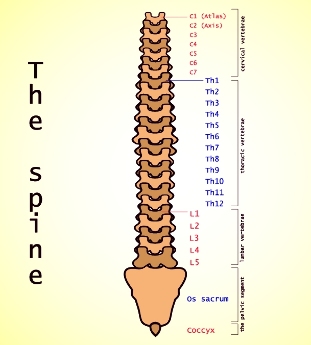
Osteochondrosis is a disease of the spine in which the intervertebral discs (and subsequently the vertebral bodies, joints and ligaments) lose their ability to function normally.
The lumbar spine is very vulnerable to disorders such as osteochondrosis.
Symptoms of lumbar osteochondrosis are often difficult to isolate, since the course of the disease has many forms.
Symptoms
At the beginning of development, the symptoms are very mild: mostly patients complain of pain in the lumbar region, aggravated by movement, bending.
After 1-2 years from the onset of lumbar osteochondrosis, pain may spread to the gluteal or groin area. There is stiffness in the lumbar spine.
Lumbar osteochondrosis develops slowly, but over time, periods of exacerbation occur more often, and symptoms intensify as more and more vertebrae continue to be affected.
The most common type of lumbar osteochondrosis is chronic lumbodynia. With this form, the following symptoms are observed:
- Symptoms appear in periods, waves.
- Mild lumbar pain, worse in the morning
- Stiff back.
- The pain subsides after 30 minutes, but even minor exertion can provoke it again.
- A sudden increase in pain is possible, "lumbago", as a rule, also due to physical exertion - acute lumbago. Symptoms of acute lumbago may last for 1 to 2 weeks before being followed by symptoms of chronic lumbago.
Treatment of lumbar osteochondrosis
The same symptoms can be signs of different diseases, and the disease may not proceed according to the textbook. Do not try to heal yourself - consult your doctor.
During an exacerbation, a hospital stay for a week is indicated. The patient is recommended to rest in bed; it is recommended to walk with the help of crutches, thus unloading the lumbar region.
For the treatment of lumbar osteochondrosis, various spinal traction and back massage are performed.
Drug therapy includes analgesics, sedatives, vitamins. In some cases, anesthetic blockade is indicated.
Physiotherapy includes ultraviolet irradiation of the lower back, novocaine electrophoresis and ultrasound therapy.
Remedial gymnastics for lumbar osteochondrosis is an obligatory point of treatment. It is designed to strengthen the muscles of the back.
Exercises include flexion and extension, abduction and adduction, and pivoting. Exercises in the pool are most effective because water reduces stress on the spine.
In case of exacerbation of symptoms of lumbar osteochondrosis, as well as in combination with a spinal hernia, remedial gymnastics consists of breathing exercises.
At home, a good effect in the treatment of lumbar osteochondrosis is the daily lubrication of painful areas with iodine, as well as pepper plaster and mustard plasters.
From traditional medicine for lumbar osteochondrosis, warming compresses with birch leaves or black radish juice are used.
Proper nutrition can significantly improve the condition.
















